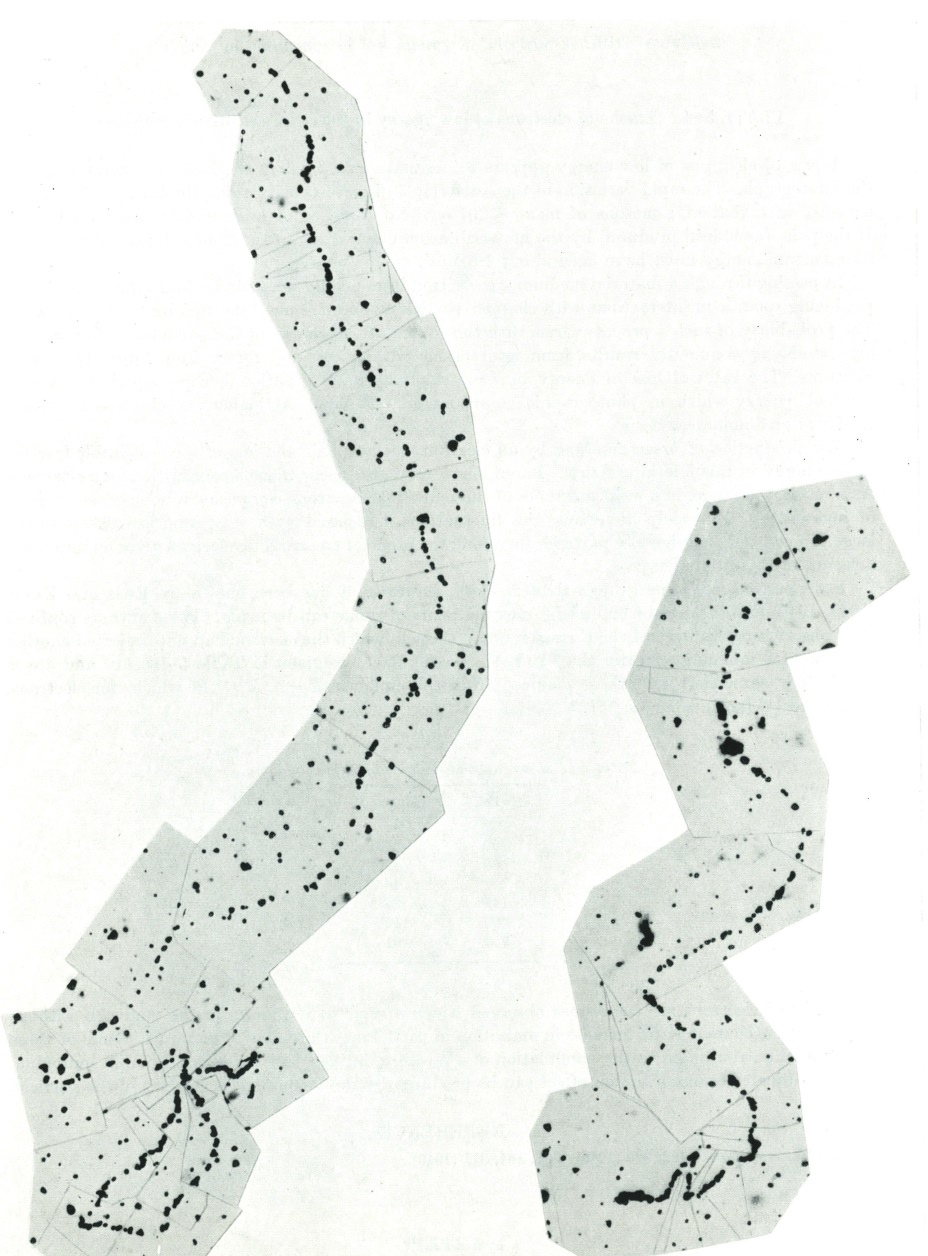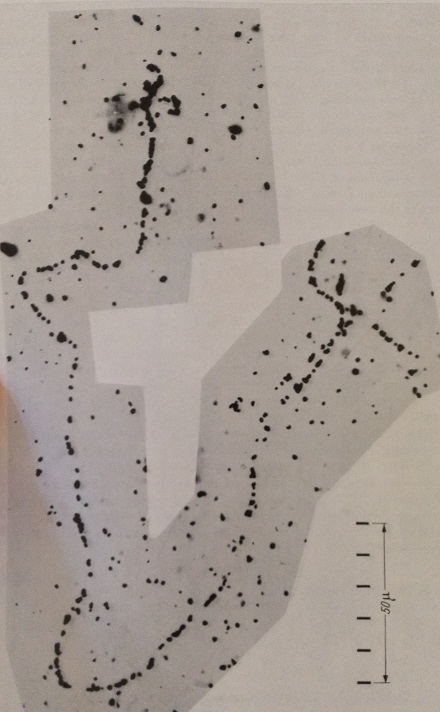Early photographic emulsion could no record the track of a particle if its specific ionisation was less than about four times the minimum value, the value or dE/dx characteristic of particle of charge |e| moving with velocity closely approaching that of light. With ‘electron sensitive’ emulsion, they can record tracks of all charged particles without exception, even the electrons at minimum value (which is even lower than the other particle, if you look at the dE/dx graph).
Picture above : End of 2 electrons in a nuclear emulsion. The particles are much scattered owing to their small mass. The become heavily ionising, and thus produce tracks with large grain density, only over a short path at the end of their range. The effects are clearly shown in the photographs. Before the production of ‘electron sensitive’ emulsion, there had been a tendency to expect that there would be serious difficulties in employing them for experiments with cosmic radiations. It was anticipated that, owing to their continuous sensitivity, even moderate exposure at mountain altitudes would result in a heavy background of electron tracks ; and that it would make difficult to inspect the plates and to interpret the observations. In practice, this difficulty was found not to be serious ; plates can be exposed for a month at an altitude of 10.000 ft without producing a serious background. Because of the action of local radioactivity and of the cosmic rays, however, it is an advantage, even when plates are stored at sea-level, to reduce to a minimum the time between manufacture and development, and thus to eliminate as far as possible, tracks other than those produced in the desired exposure.
In passing through a material medium, an electron loses energy not only by ionisation, but also by producing quanta in interaction with charged particles along its line of motion by bremsstrahlung. The probability of such a process varies with the square of the charge of the particle. It follows that bremsstrahlung commonly results from interactions with nuclei and rarely from interactions with electrons. The rates of loss of energy by bremsstrahlung and ionisation become equal at a certain ‘critical’ energy which in photographic emulsion is ~20 MeV. At higher energy loss by bremsstrahlung predominates.
Tracks of electrons are sometimes observed which appear to terminate in the emulsion without displaying the characteristic increase in ionisation at the end of their range. Some of these events may be attributed to the annihilation of a positron, or by the large angle scattering of the particle.
The mean range of electron in emulsion is about 201 μm for 250 keV, and 46,7 μm for 100 keV.

